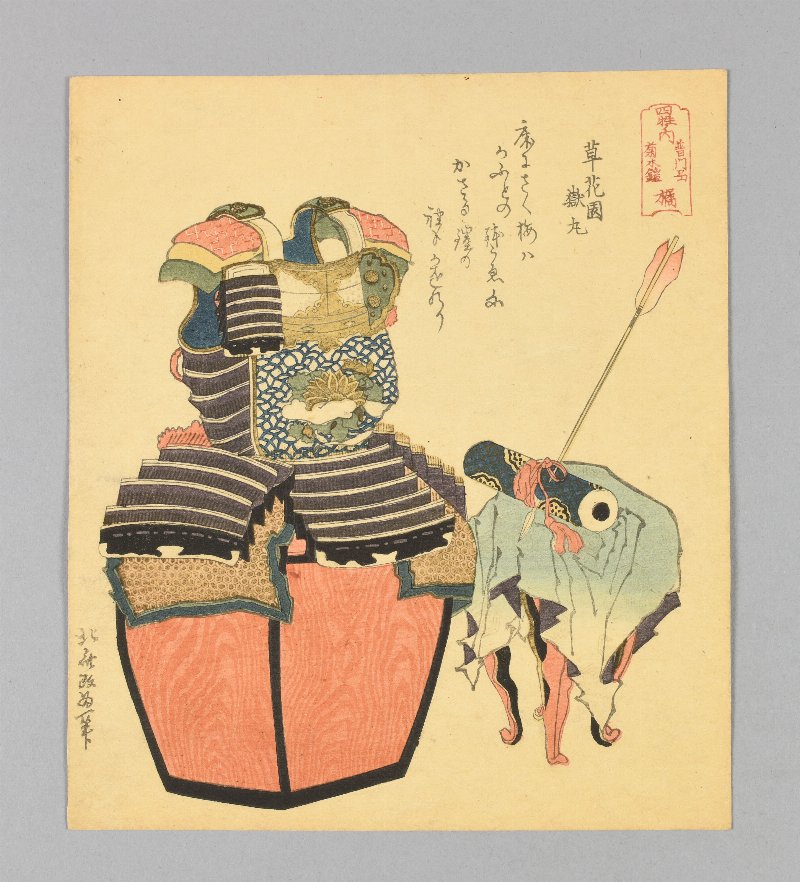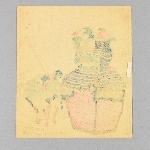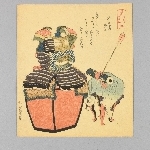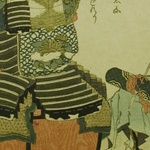The Tachibana Clan: The "Common Gate" Sutra and Chrysanthemum-and-Water Armor
CG98-1-173
From: Japan
Curatorial Section: Asian
| Object Title | The Tachibana Clan: The "Common Gate" Sutra and Chrysanthemum-and-Water Armor |
| Native Name | Nishiki-e | Surimono |
| Object Number | CG98-1-173 |
| Current Location | Collections Storage |
| Culture | Japanese |
| Provenience | Japan |
| Creator | Katsushika Hokusai |
| Period | Edo Period | Meiji Period (uncertain) |
| Date Made | 1800-1849 CE |
| Section | Asian |
| Materials | Paper | Ink | Pigment |
| Technique | Nishiki-e | Woodblock Printed |
| Iconography | Samurai Armor | Arrow | Sutra |
| Inscription Language | Japanese Language | Japanese Language | Japanese Language | English Language |
| Description | Woodblock printed surimono. Prints like these were often created as greeting cards for special occasions such as New Years. Originally designed and printed in 1822 CE by the artist Hokusai, this may be a later reprint. It is part of a series of four prints with designs dedicated to four important aristocratic lineages in Japan: the Fujiwara, Minamoto, Taira, and Tachibana clans. This print depicts the armor from the Tachibana family with a chrysanthemum and swirling water motif known as kikusui. The design refers to a river in China, lined with chrysanthemums, which provided long life to those who drank from it. Armor featuring this motif was used exclusively by a family descending from the Tachibana lineage. There is also a scroll of the "Common Gate" chapter from the Lotus Sutra being pierced by an arrow. The exact meaning of this is unclear. The print also features a poem by Sokaen Gokumaru which compares the flower on the suit of armor to a plum blossom traditionally displayed in an alcove in a Japanese home. |
| Length | 21 cm |
| Width | 19 cm |
| Other Number | CG98-1-29 - Found in Collection Number | 9 - Other Number |
Report problems and issues to digitalmedia@pennmuseum.org.





